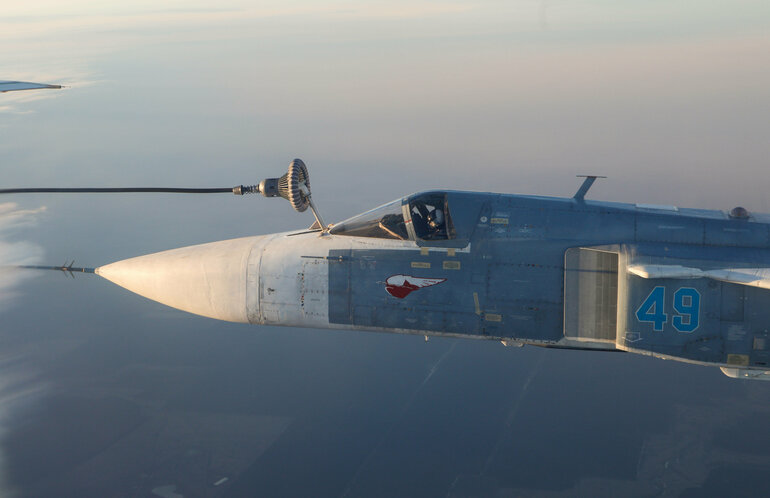The Uncertain Future of Cooperative Security in Europe

The year 2021 marks the thirtieth anniversary of not only the break-up of the Soviet Union and the end of the division of Europe but also the beginning of a new era of cooperative security and arms control on the continent. Between 1990 and 1992, three cornerstones of European arms control and military transparency came into force: the Treaty on Conventional Armed Forces in Europe, the Vienna Document on confidence- and security-building measures, and the Open Skies Treaty, which provided for unarmed aerial observation flights over the signatories’ territories.
Most of these regimes are now outdated due to technological and military progress or obsolete because key players have walked away from them. The Open Skies Treaty was the latest victim, becoming de facto dysfunctional after the US formally withdrew from the agreement in November 2020 and Russia announced it would pull out two months later. There is now a void when it comes to the core principles of cooperative security in Europe.
With regard to the architecture for nuclear arms control, the last remaining pillar is the New Strategic Arms Reduction Treaty (START), which stipulates a reduction of strategic nuclear weapons and delivery systems. Russia and the US extended the treaty at the very last minute on 3 February 2021, two days before it was due to expire. After the US unilaterally revoked the Intermediate-Range Nuclear Forces Treaty in 2019 and the Anti–Ballistic Missile Treaty in 2002, the extension of New START has been widely perceived as a positive sign.
Conventional and nuclear arms control as two sides of the same coin
Instead of investment in existing or new arms-control agreements, military deterrence has become the order of the day. The modernisation of strategic and tactical weapons stockpiles is a fact, and the arms race is once again in full swing.
The dual crisis of US-Russian nuclear arms control and the conventional arms-control regimes makes one thing clear above all: the previously firm distinction between nuclear and conventional weapons-control regimes no longer corresponds to the realities. The same platforms are capable of delivering both nuclear and conventional warheads. Moreover, conventional precision-strike systems can challenge strategic stability in a way similar to nuclear weapons. This leads to the conclusion that today’s problems of conventional and nuclear arms control should be addressed in combination.
Contemporary arms-control regimes, such as New START, illustrate that new, equally destabilising weapons technologies are not subject to any treaty-limiting provisions. Such technologies include short-range nuclear weapons and delivery systems of a substrategic nature, which amount to 60 per cent of all stockpiles of active nuclear weapons. There are similar examples in the area of conventional arms control. In addition, the capabilities of other major powers, such as China, have repeatedly been a topic in discussions of strategic stability.
The benefits of inspections and verification
Mutual inspections and verification were once core elements of most arms-control agreements, both conventional and nuclear. However, they have been mostly absent in US-Russian relations in recent years or have been carried out sporadically. It is indisputable that neither side’s compliance can be entirely verified by reverting to these instruments. Yet, these arrangements serve as an essential confidence-building tool. New START stipulates a regular exchange of information, verification by satellites, and eighteen on-site inspections per year for each side.
Clearly, there is a need for dialogue to discuss diverging views on these issues. Informal talks in the framework of Structured Dialogue, under the auspices of the Organisation for Security and Cooperation in Europe, aim to provide a platform to discuss ceilings for new conventional weapons systems, quotas for more effective observation and verification, and transparency measures, particularly in terms of new military capabilities and weapons categories.
Implications for European security
The debate on the questionability of linking arms control and deterrence has gained a new momentum with the entry into force of the Treaty on the Prohibition of Nuclear Weapons on 22 January 2021. This treaty has proven its necessity by the fact that the world’s nuclear states still possess a combined total of around 13,500 nuclear warheads. This number has decreased in recent decades but has levelled off in the last two years.
After the surprisingly fast extension of New START, both the Russians and the Americans have expressed an interest in further nuclear arms-control negotiations. While Washington aims at constraining Russia’s vast arsenal of non-strategic nuclear weapons, Moscow would like to propose restraints on US non-nuclear strategic weapons and missile-defence systems. Russia’s deputy foreign minister and chief arms-control negotiator, Sergei Ryabkov, announced on 27 January that Moscow would suggest including both nuclear and non-nuclear strategic weapons on the agenda of any future strategic arms-reduction talks. However, experts have expressed doubts that negotiations on a follow-up treaty to New START will begin soon.
Obviously, US-Russian relations have not changed with the election of Joe Biden as US president, and neither his administration nor the Kremlin will suddenly conduct a friendlier policy towards the other. On the contrary, the tone is bound to get harsher, especially considering Biden’s critical remarks about Russian president Vladimir Putin on 17 March. This notwithstanding, there is hope for a more predictable and less erratic course than that of the last four years. European security, however, will be held hostage to progress in US-Russian arms-control relations for some time yet.
Nadja Douglas is a political scientist and a researcher at ZOiS.